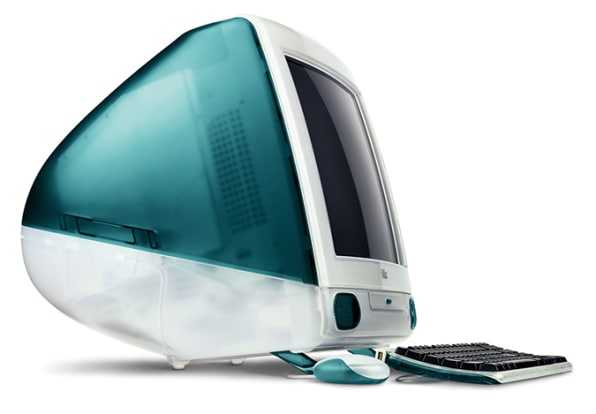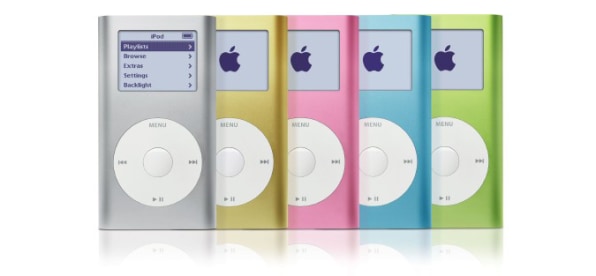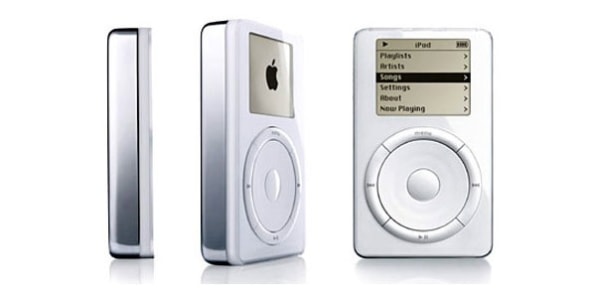How To Connect Iphone 5c To Apple Tv
In 1998, at a special Apple event in Cupertino, then-interim CEO Steve Jobs unveiled the product that would herald Apple's comeback: the iMac. But as Jobs went backstage, he wasn't fist-pumping to one of the most triumphant reveals in the company's history. He was bummed.
"I love the iMac, but we just delivered it in the wrong color," Jobs lamented.
The issue of color has long plagued Apple, Fast Company learned from speaking to scores of insiders for our Apple oral history, yet it's proven one of the most powerful maneuvers in Apple's design playbook. Their approach to color is strategically cyclical, swaying their SKUs back and forth from minimalism to a rainbow of hues, much like its own logo. The strategy has been a success, with colors breathing new life (and sales) into its iMac and iPod line. But today, as reports swirl that Apple is supposed to unveil a colorful, budget iPhone, it's worth noting just how seriously Apple takes its color palette.

Jobs almost fired an employee for picking the wrong shade of gray–for factory equipment. And when it came to the iMac, despite the success of its initial Bondi blue finish, Jobs was no less cutthroat. "A contractor and I had the responsibility of presenting new color options to Steve," recalls Doug Satzger, Apple's former industrial design creative lead. "He walked into the Valley Green conference room, and we had all these images with different colors, transparencies, textures, glosses, but none of them were actual iMacs. He turned to us and he said, 'You guys suck, get the fuck out of the room.'"
"We left, and then he asked for me to be brought back in and he looked at me and he said, 'When can I see colors?' So we worked for the next three days and we defined 15 colors and put them into three different families and built them in the actual iMacs. Steve just fell in love with the bright colors."
The final five, fruit-inspired colors were a massive success for the already successful iMac line, immediately boosting sales by 24% and driving Apple to its first profitable quarter in two years–while further shifting the conversation of Apple's line of personal computers from geeky to pop, from gray box to personal accessory. For the first time ever, the color of a computer became an outlet for self-expression.
But Apple's color pendulum eventually swung back, and Apple trended toward less ostentatious products, both in hardware and software. "Steve always wanted to stay one step ahead. When the industry started to become very colorful and lickable, then he realized–and Jony and I realized–that we needed to take a different path," recalls Don Lindsay, Apple's former design director of the Mac OS user-experience group. "We were like "Let's go down the path of minimalism, let's go for less color and focus more on patterns and textures, and different inspirations for design."
In 2001, Apple's pallette shifted predominantly to white and silver–a new aesthetic driven forth by the iPod that clearly spilled over to other products. (For instance, the once-whimsical clamshell iBook was given a sharp, white makeover.) The iPod was a huge success, and as competitors attempted to catch up with its impeccable industrial design, Apple cycled back toward color again.

Jobs was initially hesitant to render the iPod in color–with the exception of the one-off U2 edition iPod–but within three years, Apple launched the iPod Mini. It sold so unexpectedly well that Apple actually had to delay the global launch to fulfill U.S. demand.
"I still remember the colors of the iPod Mini: gold, some ugly-ass shade of green, blue, pink, and silver," recalls Dan Walker, Apple's former chief talent officer. "I remember telling Jony Ive, 'Nobody is going to buy the gold. Nobody's going to buy that baby-shit green.' Sure enough, that was the case, but we just could not make enough silver, pink, and blue iPods. But Steve liked leaving the market a little bit hungry sometimes. Having people wait a bit was OK with him, and having them sell out really quickly was OK with him, too. The scarcity created a sense of preciousness."
The colorful, cheaper Mini helped the iPod become a household name and a pocket fixture, and within a year of its release, the iPod line went from representing 14% of Apple's revenue to 31%. But with the iPhone and iPad families, Apple reverted back to minimalism: Black. White. Silver. Glass. For five years, the iPhone was iterated with less curves, eschewing ergonomics for sharper edges–an industrial obsession so deep that it led to the iPhone 4's exposed antenna design and the subsequent "Antennagate."

At tomorrow's iPhone event, strong rumors indicate Apple's budget-friendly iPhone 5C will mark the triumphant return of color to Apple's line (because the iPod touch so barely counts). And like every other time Apple has pulled this now-predictable stunt, it will surely be a hit.
However, this time, we can't help but question: Did Apple wait too long to play their color card for the iPhone? Couldn't Apple have leveraged color earlier to make smartphones feel friendlier and more accessible to first-time buyers, just as they wooed luddite consumers to the iMac and iPod? And did Apple allow Samsung too much time to catch up with their stoic industrial design–giving it the breathing room necessary to defeat the iPhone with the new world's best-selling smartphone line, the Galaxy S?
In light of historical precedent, the answer to both questions is likely yes. But then again, it's difficult to split too many strategic hairs on one of the most iconic, successful products in human history.
A team of Fast Company reporters spent months interviewing more than 50 former Apple execs and insiders, many of whom had never spoken publicly about their work. Read part 5 of the oral history here. An extended version of this oral history is available in the iBookstore and from Amazon.
Additional reporting by Max Chafkin, Austin Carr, Skylar Bergl.
How To Connect Iphone 5c To Apple Tv
Source: https://www.fastcompany.com/3017050/apples-untold-history-reveals-why-the-iphone-5c-will-be-in-color
Posted by: jentforely.blogspot.com

0 Response to "How To Connect Iphone 5c To Apple Tv"
Post a Comment